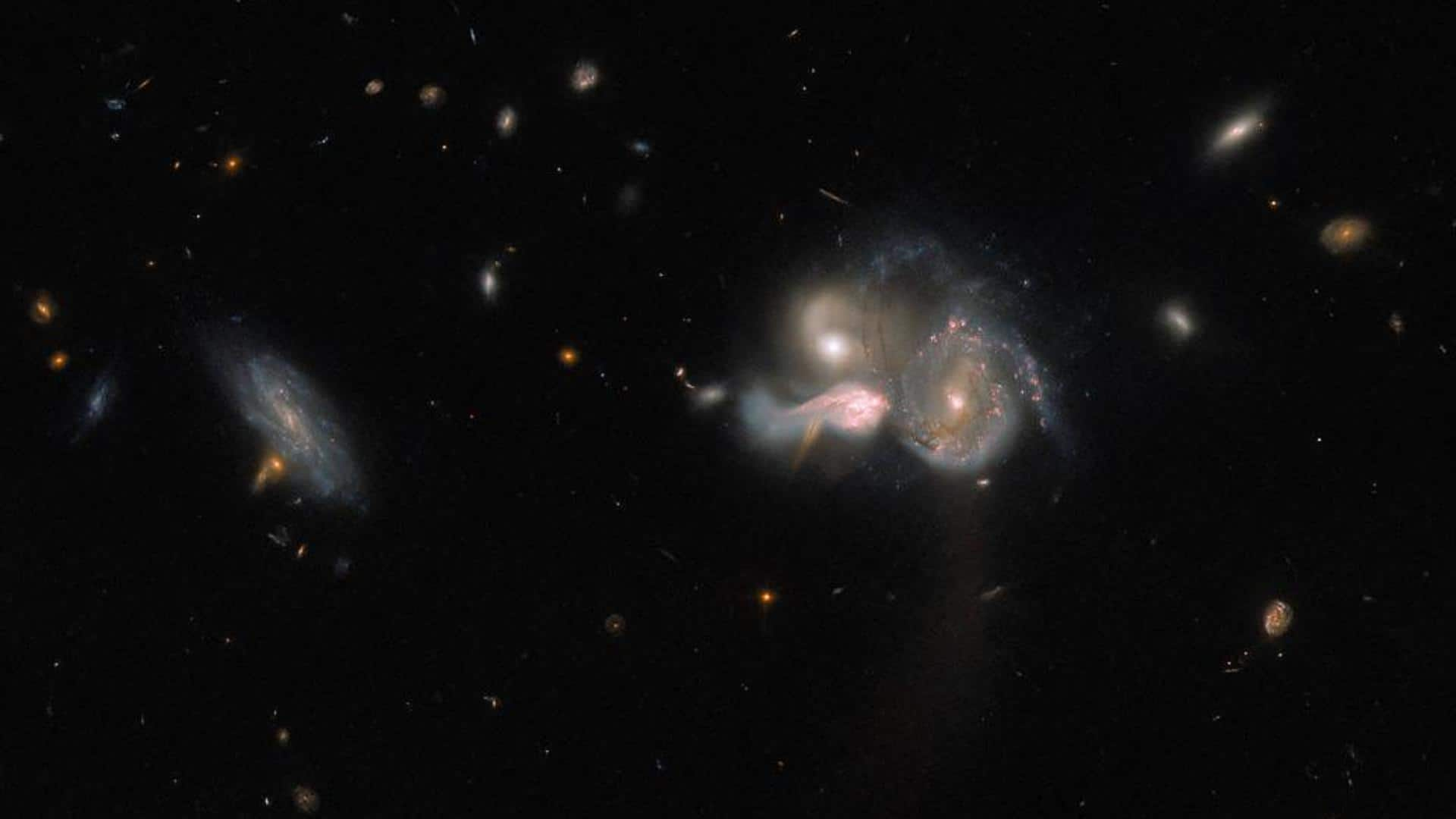
NASA's Hubble spots three galaxies that are set to collide
What's the story
A new image captured by NASA's Hubble Space Telescope reveals three galaxies that are set on a collision course. The galaxies, which lie in the constellation Bootes, will eventually merge to form a single larger galaxy. In the process, these galaxies are bound to lose their spiral structure owing to the gravitational forces of interactions between them.
Context
Why does this story matter?
While galactic collisions are not uncommon occurrences, this one is rare because each of the galaxies involved is currently in the process of birthing new stars. The image was snapped with the aid of Hubble's Wide Field Camera 3 and Advanced Camera for Surveys and can help astronomers gain insights into the formation of the universe's most massive galaxies.
Image
The colliding trio of galaxies is termed SDSSCGB 10189
As seen in the image, the shapes of the galaxies already appear to be distorted, with strands of gas and dust connecting them. The galaxies are also expelling a great deal of light. The colliding trio of galaxies, collectively known as SDSSCGB 10189, is considered to be a relatively rare combination since they lie within 50,000 light-years of one another.
Details
The three galaxies are located 50,000 light-years apart
While 50,000 light-years might sound like a large distance, in cosmic terms, it is not so. This distance makes the three galaxies "extremely close neighbors." Our own neighboring galaxies are located much further away. For instance, Andromeda, which is the nearest galaxy to the Milky Way, lies more than 2.5 million light years away from Earth.
Information
An unrelated spiral galaxy is seen near SDSSCGB 10189
A few other galaxies are also seen in the Hubble image. What's prominent among them is an unrelated spiral galaxy present near the merging galactic trio. The smudged shapes of much more distant galaxies are visible in the background.
Significance
SDSSCGB 10189 could give rise to a BGC
The latest Hubble image comes from an investigation conducted to help astronomers understand the origin of the largest, most massive galaxies in the universe, called the Bright Galactic Clusters (BGCs). It is believed that BCGs are formed through the merger of large, gas-rich galaxies like SDSSCGB 10189 and could thereby provide insights into the formation of these massive bright galaxies.